CRO marketing (also conversion rate optimization) focuses on increasing the percentage of website visitors who convert. These measures encourage customers to complete the necessary action (e.g., download a video, start a subscription, place an order, etc.).
A CRO strategy is essential for any business that wants to see clear results from its marketing and sales efforts. It doesn’t only promote the brand but directly nudges leads to action. The activity translates into the growing popularity and revenue of the business.
Learn more about the benefits of CRO marketing and how to run it below.
What Is CRO Marketing?
CRO marketing, also known as conversion rate optimization marketing, is raising the proportion of website visitors who complete a desired activity, such as making a purchase, filling out a form, or subscribing to a newsletter. A high conversion rate suggests that the website is effectively developed and appealing to its intended audience. On the other hand, a low conversion rate may be caused by several problems, such as slow loading times, a malfunctioning form, or an ineffective copy. To increase conversion rates, CRO marketing tactics are applied to establish a web design and optimization strategy centered on the user. These methods include heatmaps, session replay (for example, with Plerdy tools), e-commerce tracking, A/B testing, personalization, and UX optimization. By comprehending what motivates and persuades customers, organizations may offer enhanced user experiences that result in higher conversion rates.
Importance of CRO in Marketing
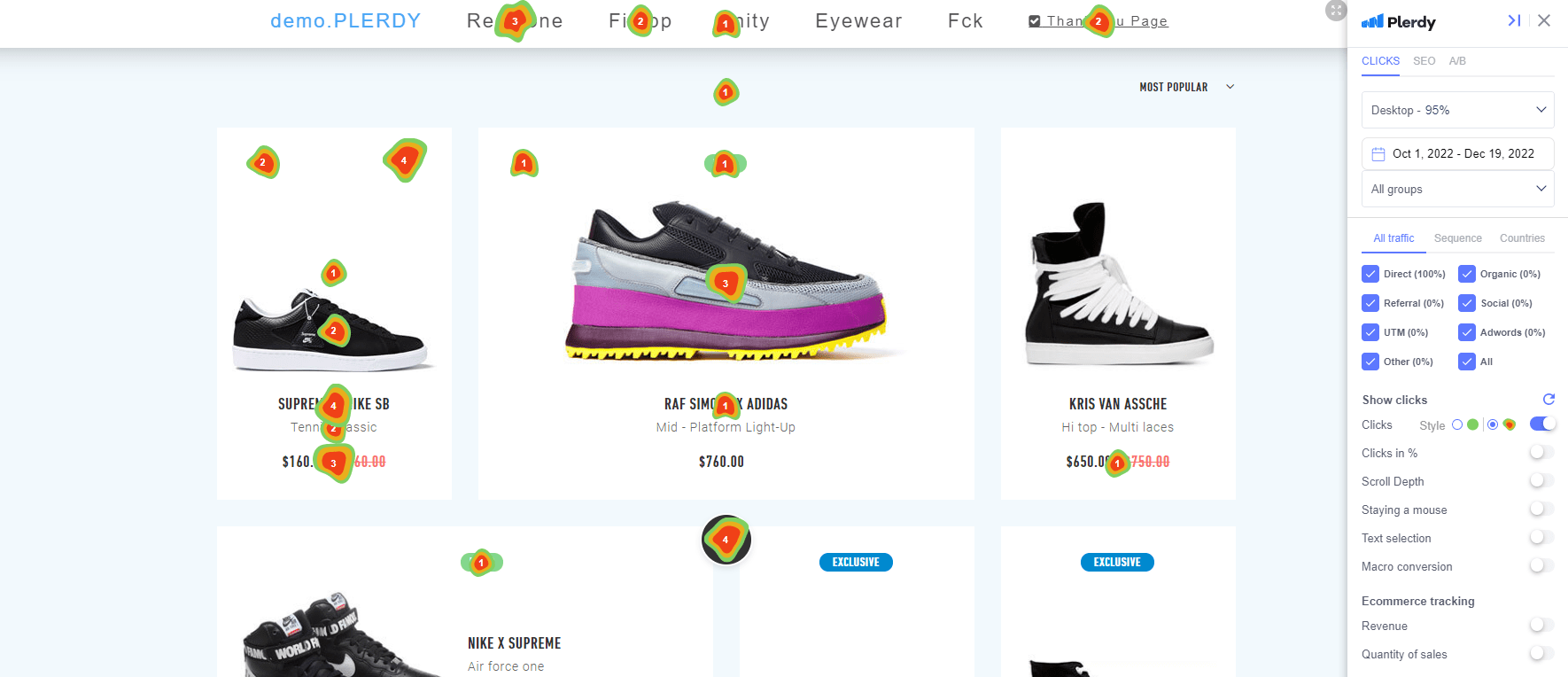
Imagine running an eCommerce business with 10000 visits per month but a 0.5% conversion rate. It means that only 50 people do what you need them to. As a result, you will have just several dozen purchases monthly, which is not enough to cover the expenses. Apart from impacting the ROI, CRO is crucial for some other reasons:
- Reduces bounce rate thanks to enhanced usability and convenience.
- Improves dwell time (the time people spend on your web pages after finding them in Google). People spend more time there when the website becomes easier to navigate and includes valuable information.
- Makes the content and marketing communications more relevant. During CRO, marketers often improve the quality of blog posts, ads, banners, and other marketing elements.
- Provides additional insights about your target audience and their behavioral patterns through analytics. You get reliable information about customers to use in other marketing campaigns, not only for conversion rate optimization.
- Helps to engage more customers and keep them active in your eCommerce store.
- Allows spending less on attracting new customers. As CRO enhances customer satisfaction, your current leads will likely bring their friends. The brand image also improves.
- Upgrades the look and design of your online store. Design changes are an indispensable part of most CRO marketing campaigns and benefit the overall usability.
- Boosts customer loyalty by making them more likely to come back
- Enables the business to achieve more with the same resources.
These and other CRO advantages prove that every digital business should have a strategy. It affects many aspects required to win consumers online, from website design to customer communications.
How to Calculate CRO Marketing
Before starting any CRO moves, you should know what you currently have. Therefore, measure your CRO rates first. It’s super easy, and you need minimum data for it.
Conversion rate = Number of conversions/Total visitors * 100
The number of conversions: The number of times users have completed a specific action. The formula will include the clicks on the Play button if you want to know the CRO rate for video views.
Total visitors: The number of people who have landed on your website or online store.

Here’s an example: If your traffic reaches 1000 people and 7 leads convert, you need to divide 7 conversions by 1000 visits and multiply by 100%. In this case, the conversion rate is 0.7%, which is considered pretty low.
Note that you need to measure CRO rates to monitor any changes continuously. Such tracking allows seeing whether your marketing strategy yields the expected results. If it doesn’t work for any reason, you can instantly implement changes to fix the mistakes. Besides, avoid getting obsessed with average conversion rates for your industry. Instead, you’d better compare the current achievements with your previous metrics.
Plerdy – Useful Tool to Build a CRO Strategy
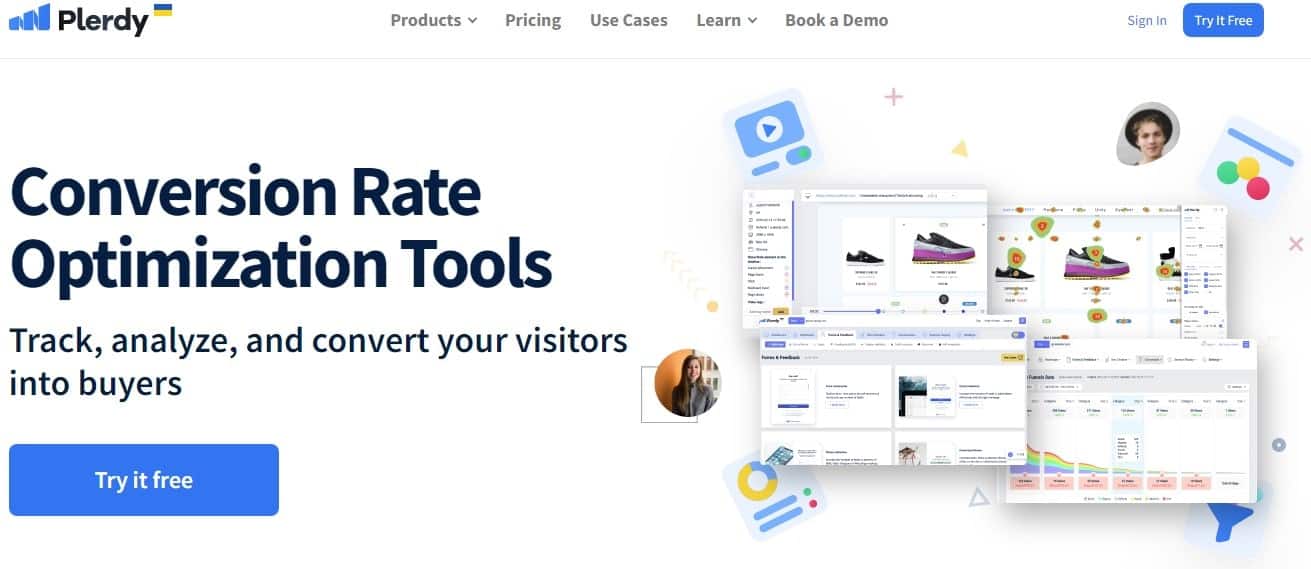
Plerdy is a conversion rate optimization platform that includes multiple tools for conversion rate optimization. They provide different types of data for comprehensive customer behavior and website analysis. Subscribe to Plerdy for free to access the following capabilities:
- Heatmaps. These are color-coded maps that display user activity on website pages in real-time. For example, learn how often users clicked website elements and in what sequence. You can also check scrolls, hovers, and other actions. These findings are fundamental to building a data-driven CRO strategy.
- Even tracking. This tool enables marketers to track specific user activities. You can record interactions with images, forms, videos, buttons, scroll bars, and other design elements. It’s an opportunity to analyze separate items separately for quicker and more accurate results.
- Conversion funnel analysis. This feature turns raw data into informative visualizations showing what percentage of people convert and at what stage they drop off.
- Sales performance. Use this feature to estimate the revenue each website element generates quickly. It shows what customer conversions are the most profitable.
Apart from these services, Plerdy also supports screen recordings, popup forms, NPS feedback, and other CRO features.
Steps to Build a CRO Marketing Strategy
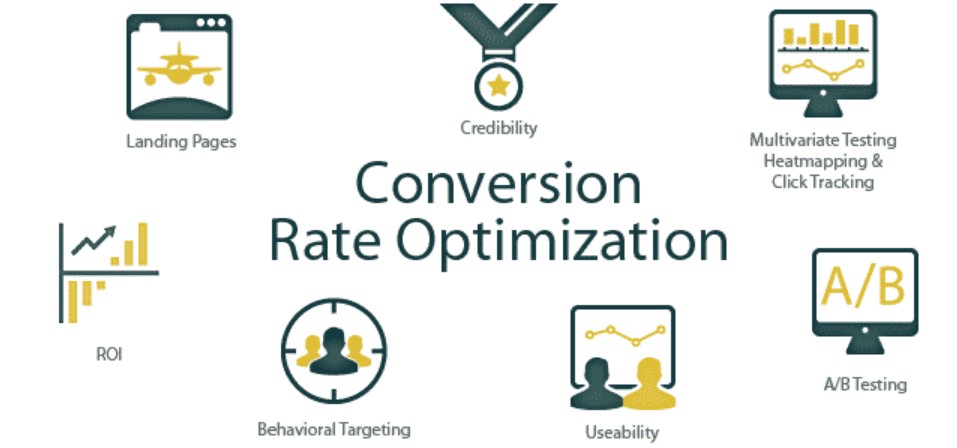
Conversion rate optimization (CRO) is the science of making changes to your website so that more people buy something (usually, 99% never buy anything). There are countless guides and checklists written around the post. But we are about to go about it differently – in a more visual-friendly way, as that’s what we specialize in.
To build a successful CRO program, your business must know the following:
- CRO audits your internet marketing efforts: An in-depth examination of your digital marketing plan can assist you in evaluating the efficacy of each approach and determining its effect on channel traffic (organic, PPC, direct, etc.) and your target demographic.
- Determine what prevents your target audience from converting: Determine what inhibits potential consumers (visitors) from converting by identifying where customers are dropping off and the possible causes.
- Learn what motivates your audience to convert: Determine what motivates clients to purchase your product, contact your company, or visit your store.
- Analyze the Plerdy conversion funnel: Track how many people land on your site, the percentage of those who add a product to their cart, those who go on to the checkout, and the percentage who make a purchase.
- Set conversion goals (Plerdy events): Determine what you want to achieve in terms of the number of net new customers, lead goals, and overall conversion rates (CR) and transfer to GA4.
- Tap into qualitative and quantitative data: Use both data types to assess how your ideal buyers or shoppers behave on your site and determine where the actual sticking points are.
- Identify potential tests to run: Based on your gathered data, create a list of “to-do tests” that will help you improve your conversion rates.
- Create a strategy or CRO workflow: Make sure you plot time to measure your results and create new hypotheses based on them. Document your CRO workflow in a project management tool to track testing ideas and active tests.
Once your campaign has started, you need to track results, even though it’s automated. If something is not working, you can re-adjust it. Adding open and click-through rates to your chart will help you visually understand patterns and opportunities to improve your campaign plan. Following these steps, you can build a smart and successful CRO plan to help your business convert more site visitors into loyal customers.
How to Improve CRO Marketing
Improving Conversion Rate Optimization (CRO) is crucial to the success of any digital marketing campaign. The following tips can help increase the completion rate of desired actions, such as filling out a contact form, downloading a white paper or making a purchase.
Useful Tips to Improve CRO:
- Implement a strong CMS that allows easy content management and quick changes. Poor back-end CMS can hinder CRO execution.
- Leverage customer reviews and testimonials, a powerful tool to increase conversions and user engagement.
- Analyze the right data points for the execution of CRO strategies. Look for barriers to completion, misplaced calls to action and easy-to-escape conversion paths.
- Test and test again. Heatmap and session replay data help to identify problem areas and improves conversion rates. Try changing the color of your call to action or varying the information requested on a form.
- Think long-term. CRO testing is an ongoing process that requires continuous dedication to improve site functionality and performance.
CRO is a process that requires the analysis of the user journey to improve the UX (usability) website. By implementing these tips, businesses can optimize their websites for maximum conversion rates and generate significant revenue gains and growth.
What is a Good Conversion Rate?
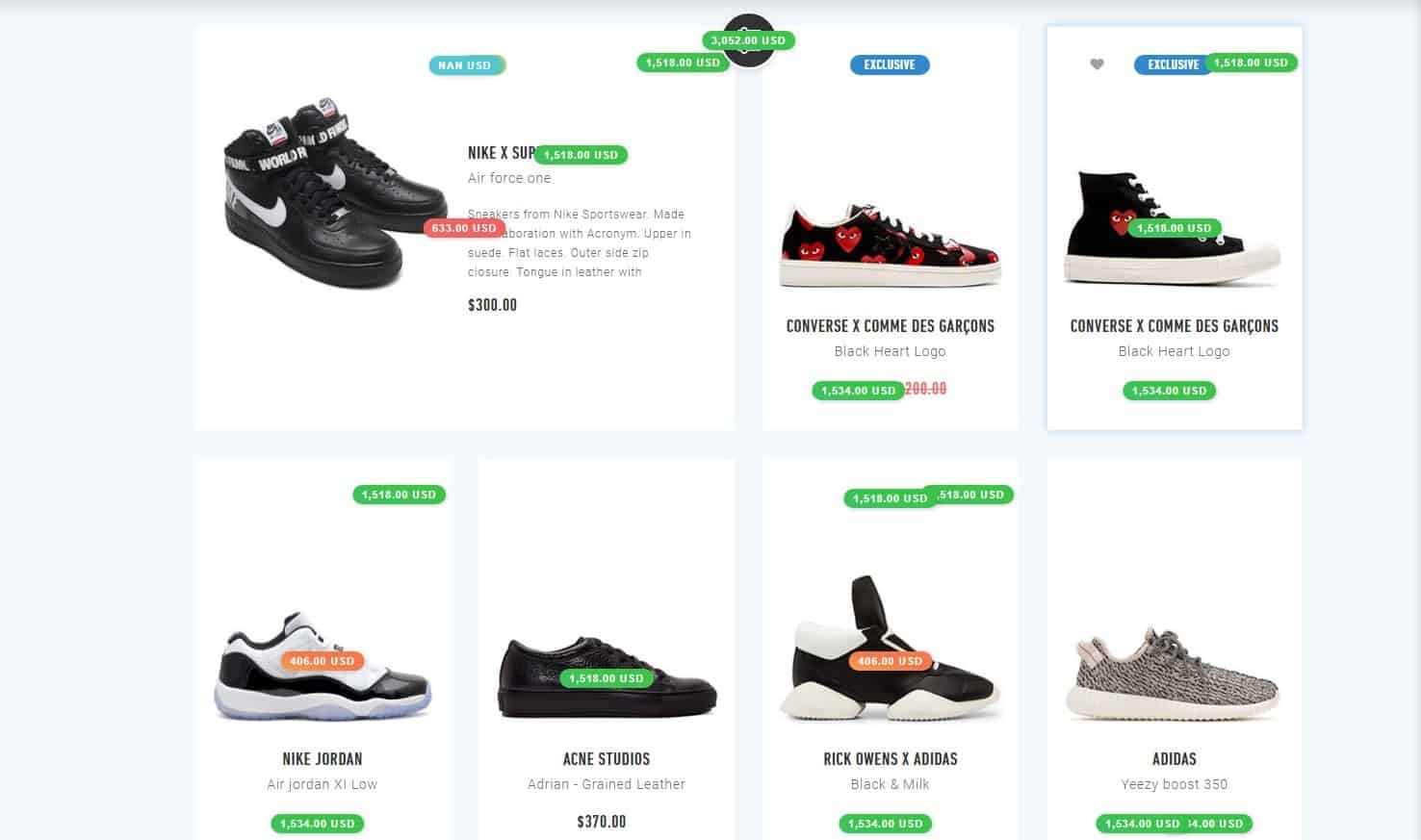
If you’re in the marketing world, you’ve probably heard the term “conversion rate optimization” or CRO. But what exactly is a good conversion rate? According to the latest data as of November 2022, average conversion rates across e-commerce businesses were at 2.1%, rising 0.8 percentage points from the previous month but falling 0.28 percentage points from a year ago. However, remember that rates differ greatly from product to product and market to market. Products related to health and well-being have the highest e-commerce conversion rates of 4.2%, followed by arts and crafts at 4.07% and kitchen and home appliances at 3%. In terms of e-commerce conversion growth rates, only products in the pet care and baby and child categories have registered rising conversion rates. It’s important to track your conversion rate closely and identify areas where improvements can be made to unlock new opportunities that may have yet to be apparent. Remember that conversion rates can be an excellent barometer of an online store’s “health” and competitiveness when used in conjunction with other important metrics.
Steps in the CRO process
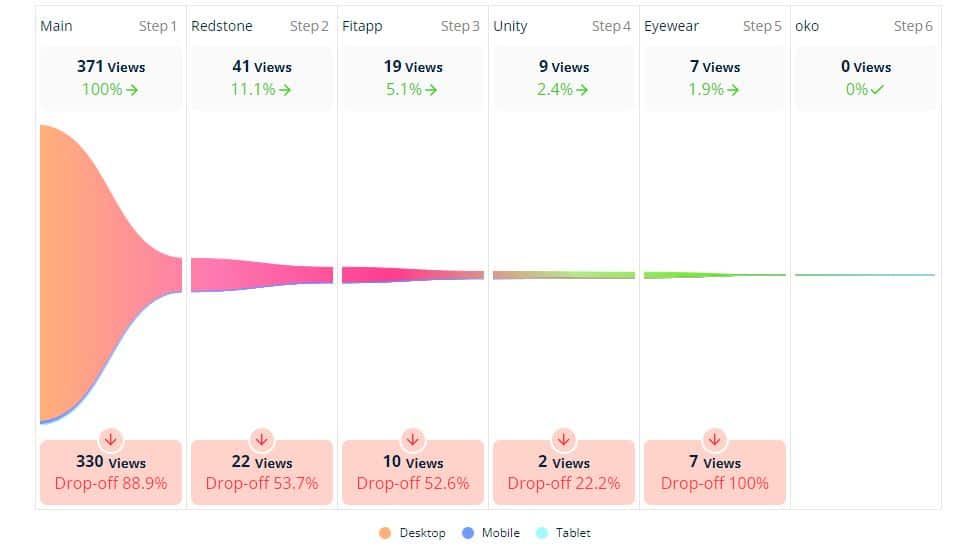
When creating a successful CRO process, several important steps should be taken to ensure optimal results. The first step is to define the website design elements that actively make a positive difference in your conversions. This helps identify the gaps in core actions that benefit from action-oriented decisions. The second step is to create tactical website goals you want to achieve, which will help you narrow your search issues or UX problems.
Next, conducting a CRO audit of your site is necessary to create a comparative metric against your past and future progress. Qualitative data collection by a client is extremely important to the website CRO process. Using tools that provide qualitative information and conducting user interviews can inform user behavior and help you form a strong hypothesis. Understanding and optimizing the user journey map, prioritizing hypotheses, and creating a CRO calendar are important steps in the CRO process. Finally, continuously implementing, testing, and improving will help you achieve the best conversion rates.
Key performance indicators (KPIs) for CRO
A KPI is a quantifiable activity used to measure how a key aspect of your business is operating or how much volume it’s receiving. For websites, this can include “sales volume,” “several visits,” “average cart value,” and a variety of other metrics.
KPIs are metrics, but not all are KPIs; the terms aren’t mutually exclusive. Just because some information is measurable doesn’t mean that those measures are informative. KPIs are what drive results for your specific goals.
Your metrics either lead to “macro conversions” or “micro conversions.” Macro conversions are your website’s primary goal, converting user traffic into revenue. Conversely, micro conversions are actions a user completes that are either on the path to revenue-generating macro conversions or not directly related to revenue generation. Micro conversions are process milestones or secondary actions, such as the number of checkout visits, pageviews per user, cart adds, etc. But micro conversions are not KPIs.
On average, the metrics that can take a backseat are pageviews per user, click-through rate, bounce rate, and the average time a user spends on-site. All metrics don’t directly involve money. Other micro conversions include visiting the checkout page, adding a product to the cart, the number of pages visited, and several others. These may indicate interest but don’t help you persuade the user to click “purchase.”
Here are the four KPIs that matter for website optimization:
- Revenue per visitor (RPV) is the average amount you make per visitor.
- The conversion rate measures the percentage of users who completed a specific action, such as filling out a form or purchasing.
- Customer Acquisition Cost (CAC) is acquiring a new customer. The goal is to minimize your expenditures and time, thereby maximizing your profits.
- Customer Lifetime Value (LTV) predicts the net profit attributed to a customer’s future relationship.
Calculating LTV depends on your business model. A good working equation is (Average Value of a Sale) X (Number of Repeat Transactions) X (Average Retention Time in Months or Years). The main value of these formulas is to give marketers an idea of where to invest their budget and how much to spend to acquire a customer.
User path analysis visually depicts what happens when visitors enter or use your website. Tracking user paths shows you whether you’ve built an intuitive website that’s easy to navigate—so users can easily find what they’re looking for and convert.
Other important KPIs include form conversions, CTA conversions, bounce rate, and NPS score. By tracking the right metrics and working to improve them, you can develop a strategy to earn back the cash you spend and even profit.
CRO Experts
In search of useful CRO knowledge? Look just at the CRO Experts. These experts commit themselves to maximize conversion rates (CRO). Through sharing their knowledge, CRO professionals support companies and marketers in improving their bottom line. We have developed a list of 124 professionals to assist you negotiate the realm of CRO including:
- Peep Laja, CEO at Wynter and CXL
- Craig Sullivan, an optimization, analytics, UX, and AB testing expert based in London.
And kindly let us know whether we have overlooked someone; we constantly want to grow our network with fresh CRO professionals. Thus, maximize your website for highest conversion rates by following the CRO specialists now.
User Experience (UX) Design and Optimization

In the quickly changing digital environment of today, user experience (UX) design and optimization are absolutely vital. A poorly designed website might result in a high bounce rate and low conversion rates, resulting in lost revenue. This is where usability testing comes in. Testing the usability of your website helps you to guarantee that it is simple and user-friendly. Starting with the fantastic resource The Website Usability Checklist with 210 points will help you to guarantee you cover all vital areas. Following these important guidelines will help you to run a usability test for your website:
- Generally speaking, make sure your website offers information about your eCommerce website and brand history, has certification markings, and features a great phrase outlining it next to the logo. On your website, also take into account including geo-targeting and a language selection.
- Product page usability: Including a photo zoom tool, video unpacking and inspection, and product information, a product page should present the user a seamless experience. Clearly state your pricing and delivery policies; also, show a visible price tag and currency indication.
- Purchasing process usability: The purchasing process need to be simple and free of errors. Show a predefined list of items on your eCommerce page and offer a basic method for delivering goods to the garbage. Make sure the delivery cost is computed automatically and guarantee at least minimal ordering steps.
- Content should be targeted for your audience, legible, and instructive according to usability study. Keep the book brief and choose easy fonts and colors for reading.
- Ensuring that your website’s structure is user-friendly with an end-to–end menu, clickable breadcrumbs, and well-organized blocks can help to define usability. Create well considered internal link systems and use a visual hierarchy for headings.
- Internal linking on the website: Add a return button for simple navigation and show honest, obvious links using several font colors.
Taking into account the above mentioned aspects will help you to maximize the UX design of your website and guarantee a good user experience, hence ensuring a greater conversion rates and more income.
CRO Marketing vs. SEO
SEO and CRO share many things. Both techniques marketers do to maximize a website and increase its usability. In terms of design optimization and website content, they enhance one another and cross-over. Still, CRO and SEO differ greatly.
The major one is that SEO occurs at the top of the funnel. Its main goal is to draw more users by improved Google search results. Quality SEO makes a website show at the top of search results, which increases user visit probability. Conversely, CRO happens at the bottom of the funnel when the leads are already engaged and ready to turn over.
Therefore, marketers should keep in mind that while creating CRO and CEO plans, they aim different clients. They have to coordinate these methods simultaneously to make them complimentary. For instance, good keywords and website design help CEO and CRO alike. Furthermore as crucial is website speed.
Conclusion about CRO Marketing
As we wrap off our tour through the realm of CRO marketing, let’s consider the ways in which optimization could affect business performance. While advertising and partnerships may create traffic, diligent experimentation and trained professional analysis will enhance your conversion rate. Technology automation and Plerdy CRO software enable us to gather personal data and engage with particular groups to identify the perfect version of our website. We want to keep attention on our goal, hence the ratio between simplicity and intricacy is really important. Depending on the sector, retail studies and intelligence can help us go in the correct path. You should hence not wait any more. Try Plerdy for CRO analysis or a CRO masterclass to start today as a CRO professional!
